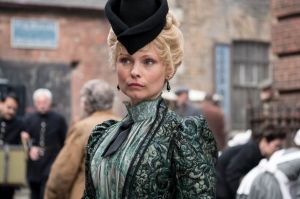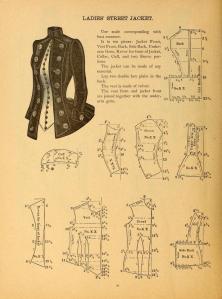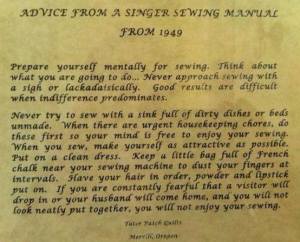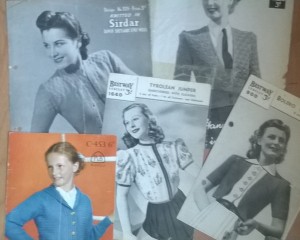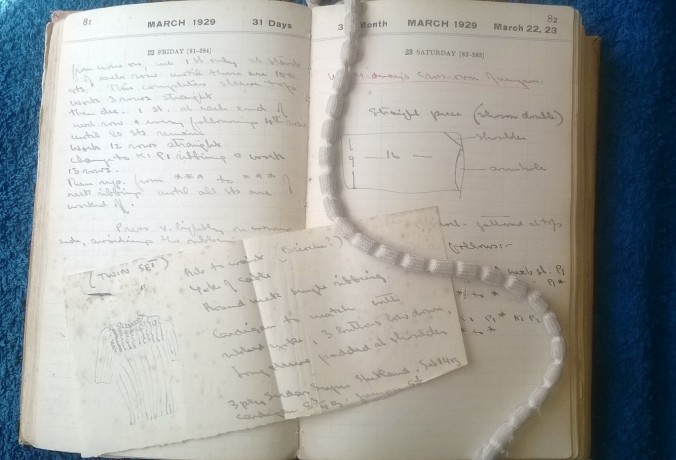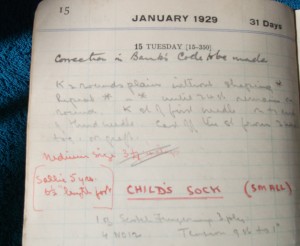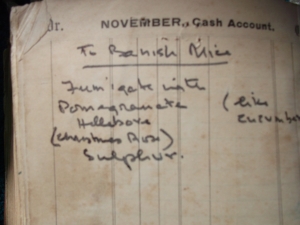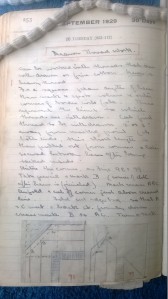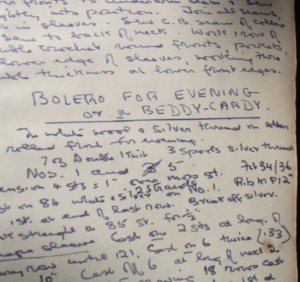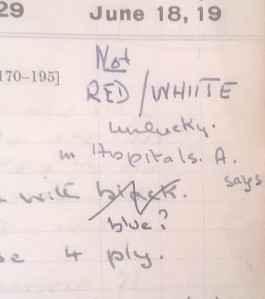This year’s new year’s resolution is to learn how to sew better. I want to get to grips with hand-quilting, embroidery and dress-making. In particular, I want to make some vintage clothes from old patterns.
This year sees the start of a new research project on material culture in children’s literature. I’m taking a semester’s research leave to get started on a monograph and I’m surrounded by all things Victorian at the moment…books, catalogues, advertisements, cartoons…and so I decided that my first project of the new year should be something Victorian that ties in with my research.
Outside of the library, I’ve been getting a regular fix of rollicking, romping, ripping Victorian entertainment through Ripper Street. I know people complain because it’s not historically accurate. I know that while it’s theoretically set in the late 1880s, there are all sorts of anachronisms and some things (like Jackson’s gun) appear WAY ahead of their time whereas other things (like some of the slang words used) are more than a little archaic.[1]
But I don’t care.
I don’t care because the whole thing is filmed in Dublin and I love watching to see if I can spot bits of the sets – Trinity College[2], the Dead Zoo[3], Dublin Castle[4]…
I don’t care because the dialogue has a rhythm and a register all of its own that makes the world of the story unique.
I don’t care because even the small characters are brilliant and have their own little lives to get on with.
And mostly I don’t care because I adore the clothes.
The sleeves! The standy-up collars! The skirts! The mad turquoise and orange palette that the third season rocked! Everything Long Susan wears!
- Bustles!
- Corsets!
- Jackets!
Behold her mighty sleeves. And those hats.
How I want to get a hat like that and stick it to the front of my head like a mad Victorian unicorn…I want to sit in a room wallpapered with gold and teal peacocks and snark at anyone that comes near me in an inferior get-up…
And so when the latest (and maybe last?) season of Ripper Street came to an end I decided that what my little heart desired most was a jacket like Long Susan’s. Preferably one that I could actually get away with wearing in real life without small children pointing at me on the street.
So – to research!
My recent searches of late 19th century periodicals turned up some beautiful pictures but sadly no practical patterns. I found some nice modern patterns that are based on old designs but that felt a little bit like cheating (bear in mind that I will cheat heavily when it comes to actually making this this…there’s no way I’m going without interfacing or my sewing machine so cheating at the pattern stage too makes the whole thing dishonest).
Then I found The National garment Cutting Book of Diagrams from 1888. It’s from exactly the right period and it is a many-splendored thing. It’s full of wonderful, strange, outfits with big bustles and enormous sleeves. I love sleeves.
I was tempted by some of the coats and the dresses – even the aprons looked like fun.
But I loved this jacket the best.
The pattern is…not what I’m used to.
Here it is in its entirety.
That’s it. One page. There’s no indication of how any of these bits fit together and the only advice for sizing is “use scale corresponding with bust measure”. The description says ‘in ten pieces’ but only nine are drafted here. Thanks Anonymous. That’s so helpful.
After some serious moping, Karl suggested that I make a miniature version as a sort of tiny mock-up toile. And so I did.
I traced over the pattern pieces as they are printed and cut the pieces out of some left-over quilting cotton (bad choice in retrospect because it frayed so much). It was a bit strange to sew sleeves that only had space for one or two pins.
Here it is.






Apart from the woejeous[5] stitching and the gammy[6] bits under the armscye I’m rather pleased with it. I did eventually (after some swearing) figure out where all the bits went and how the pieces fit together.
So, this weekend’s project is to make a full-size toile. I have some canvas, a lot of pins and a heap of enthusiasm. And I’ll be following the (anachronistic) advice from Singer the whole time.
I’ll let you know where it gets me.
[1] Vanessa Heggie has an excellent blog post that points out that it’s not as far-fetched as it seems initially http://www.theguardian.com/global/the-h-word/2013/feb/03/victorian-science-of-ripper-street?CMP=twt_gu
[2] My alma mater…it doubles as a surprising number of buildings.
[3] For non-Dubliners, the Dead Zoo is like the normal Zoo but it’s full of taxidermied animals rather than living ones. It’s a fantastic place and there are many wondrous things to see, including a lion who obviously died of natural causes. Probably the mange. It’s the saddest looking lion in the whole world. He’s gone all baldy and sideways in his case and the moths have been at him but he’s kind of brilliant because you won’t see a manky old dead lion so proudly displayed anywhere else.
[4] Also where they filmed The Tudors. That’s less exciting to watch because history has already given out the spoilers.
[5] A word I learned from my mother which means very bad, worthy of woe, grief-inducing
[6] Unable to function normally due to chronic injury or pain (in this case, pain caused to my fingers)



